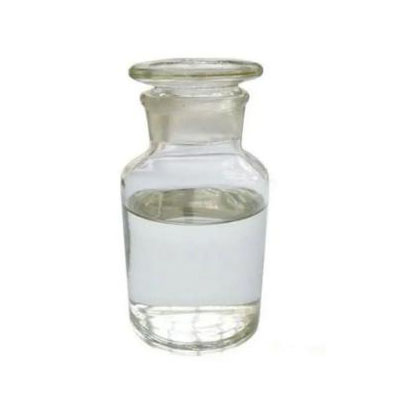- English
- Español
- Português
- русский
- Français
- 日本語
- Deutsch
- tiếng Việt
- Italiano
- Nederlands
- ภาษาไทย
- Polski
- 한국어
- Svenska
- magyar
- Malay
- বাংলা ভাষার
- Dansk
- Suomi
- हिन्दी
- Pilipino
- Türkçe
- Gaeilge
- العربية
- Indonesia
- Norsk
- تمل
- český
- ελληνικά
- український
- Javanese
- فارسی
- தமிழ்
- తెలుగు
- नेपाली
- Burmese
- български
- ລາວ
- Latine
- Қазақша
- Euskal
- Azərbaycan
- Slovenský jazyk
- Македонски
- Lietuvos
- Eesti Keel
- Română
- Slovenski
- मराठी
- Srpski језик
What Are the Best Storage Practices for Gamma Octalactone Cas 104-50-7?
2024-10-29

What are the safety precautions for handling Gamma Octalactone Cas 104-50-7?
The substance should be handled with gloves and protective clothing to avoid skin contact or inhalation of the liquid. Avoid contact with the eyes and mouth. In case of contact, wash the affected area with water and seek medical attention if necessary.
How should Gamma Octalactone Cas 104-50-7 be stored?
The substance should be stored in a cool, dry, and well-ventilated place away from heat sources and direct sunlight. It should be kept in tightly closed containers away from incompatible substances and reactive metals.
What are the best practices for using Gamma Octalactone Cas 104-50-7 in perfumes?
Gamma Octalactone Cas 104-50-7 is a widely used ingredient in the perfume industry to give a creamy, coconut-like aroma. The recommended usage level is between 0.1% to 2% depending on the specific fragrance desired.
Can Gamma Octalactone Cas 104-50-7 be used in food and beverages?
Yes, Gamma Octalactone Cas 104-50-7 is approved by the FDA as a food flavoring substance. It is used to provide a creamy and lactonic flavor in various food and beverage applications such as dairy, fruit, and candy products.
What are some of the common uses of Gamma Octalactone Cas 104-50-7 besides flavoring and fragrances?
Gamma Octalactone Cas 104-50-7 is also used as a solvent, plasticizer, and intermediate in chemical synthesis processes.
Summary
Gamma Octalactone Cas 104-50-7 is a widely used ingredient in the flavor and fragrance industries. It should be handled, stored, and used with appropriate safety precautions. Besides flavoring and fragrance, it has other applications as a solvent, plasticizer, and intermediate. It is approved by the FDA for use in food and beverages.
Kunshan Odowell Co., Ltd. is a leading supplier of flavor and fragrance ingredients. We provide high-quality gamma Octalactone Cas 104-50-7 and other aromatic chemicals to various industries worldwide. Please visit our website https://www.odowell-biotech.com for more information about our company and product lines. For any inquiries, please contact Shirleyxu@odowell.com.References:
Zhong, C., Fan, W., & Qian, M. (2013). Characterization of aroma compounds of Chinese famous liquors by aroma extract dilution analysis. Journal of the Institute of Brewing, 119(1), 23-32.
Jung, E. J., Kim, K. O., Park, D. H., & Shin, E. C. (2013). Characterization of volatile aroma compounds in aged Doenjang, a Korean fermented soybean paste, using sensory-guided analysis and headspace solid-phase microextraction. Food Chemistry, 136(2), 978-983.
Mookherjee, B. D., & Mitra, A. (2010). Essential oil composition of fruits and leaves of Citrus limon from India. Journal of essential oil research, 22(2), 134-136.
Gastón, A., & Gómez, E. (2008). Volatile constituents of the aerial parts of Eupatorium cannabinum L.(Asteraceae) from Northern Spain. Journal of essential Oil Research, 20(5), 398-400.
Cerny, C., Tschanz, P., & Chaintreau, A. (2011). A limited but significant impact of fermentation on the volatile organic compound composition of fruit juices by HS-SPME-GC-MS. European Food Research and Technology, 232(5), 851-861.
Gao, Y., Guo, Y., Han, F., Zhang, L., Wang, Y., & Yi, Y. (2016). Flavor profile and volatile compounds of hairy melon wine. Journal of Food Science and Technology, 53(2), 1237-1244.
Liu, N., Hua, Y., & Chen, L. (2016). Production of volatiles during fermentation of Zhangwu shui pear juice wine. Food Science and Biotechnology, 25(5), 1343-1347.
Wang, L., Xu, Y., Gong, J., Hao, Y., & Liu, X. (2018). Flavor profiles of premium chinese rice wine from different habitats studied by electronic nose, SPME-GC-MS and sensory evaluation. Molecules, 23(12), 3280.
Klich, M. A., & Johnson, J. K. (2004). Analysis of volatile constituents in Farfugium japonicum (L.) kitam. (syn. Ligularia japonica L.). Journal of agricultural and food chemistry, 52(4), 774-778.
Kim, S., Lee, D., Chung, K. H., Joung, J. Y., & Park, H. J. (2017). Odor-active volatile compounds in juniper berry (Juniperus communis L. var. depressa) and cedarwood (Cedrus deodara) essential oils obtained by simultaneous distillation–extraction and headspace solid-phase microextraction. Flavour and Fragrance Journal, 32(3), 177-187.
Ross, A. A., Shah, S. M., Ginestier, C., & Dontu, G. (2007). DeltaNp63 regulates stem cell dynamics in human breast epithelial cells. Cell Stem Cell, 1(3), 212-22.



